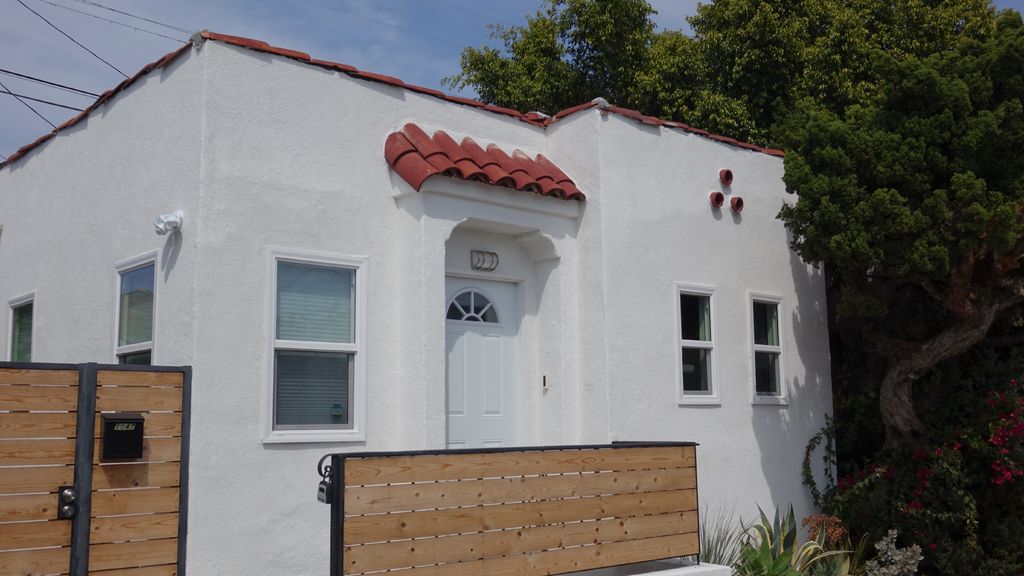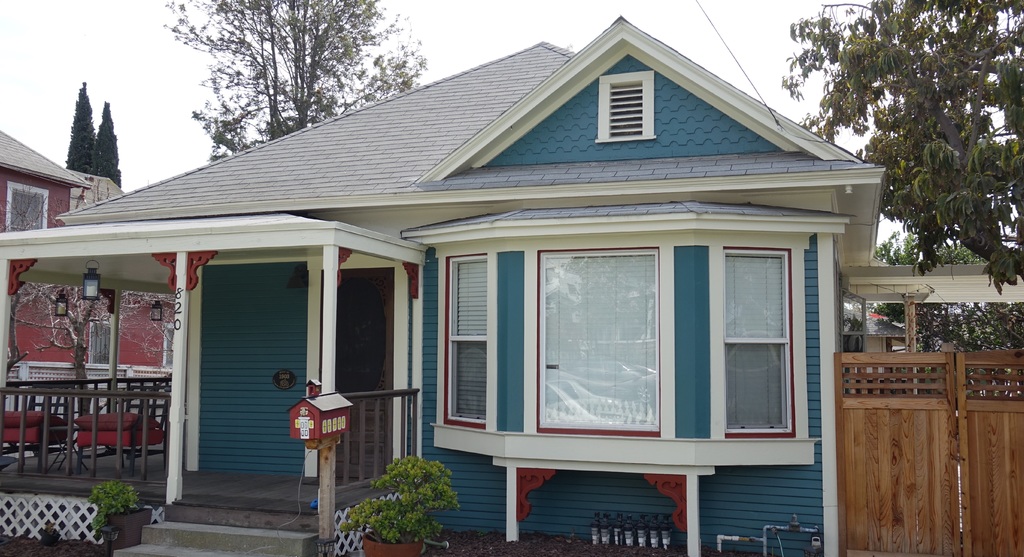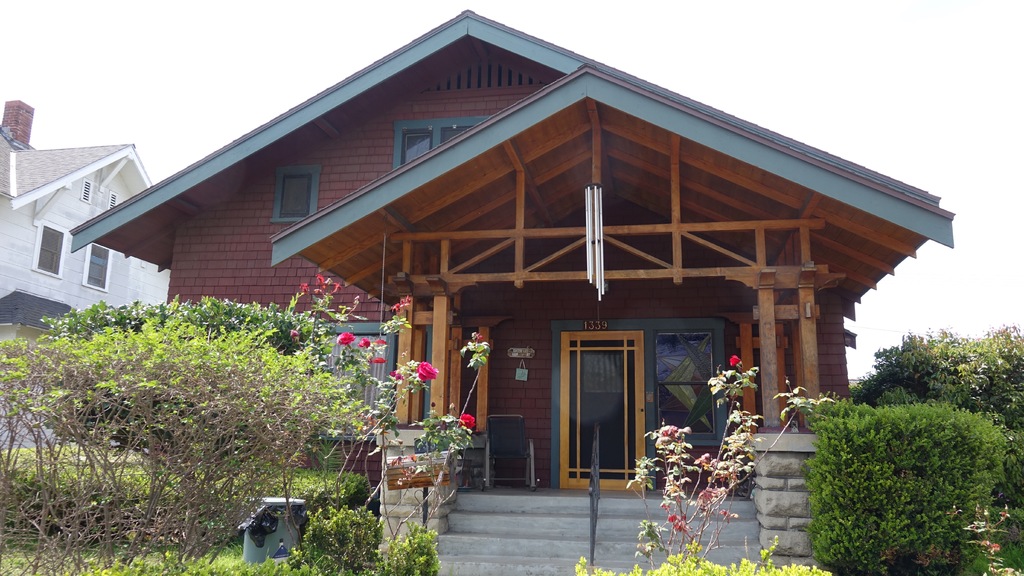It’s very likely you’ve driven down one of Long Beach’s main corridors and never realized you’re passing through a neighborhood with tons of history. Long Beach Historic Districts vary widely in the number of contributing structures and architecture, which often is tied to the era of their construction. We have some advice for those pondering the purchase of a home in a historic district.
Why Own a Historic Home?
It’s pretty darn cool to live in a home that was built before your grandparents were even born. Every one of these old homes has probably seen many residents come and go – but they’re still here after all this time. Stewardship of a historic landmark is enough to get some people excited to live in a historic neighborhood.
Historic districts tend to galvanize community involvement among residents through family-friendly events and common interest in an architectural style. This neighborliness is attractive among homeowners who enjoy getting to know the other people on their block.
Besides the cultural and social benefits of owning a historical home, there are also potential financial benefits for those who obtain a tax break through the Mills Act. The Long Beach Mills Act Program offers property tax breaks to encourage the owners of historic buildings to restore and maintain the architectural integrity of their residential or commercial structures. However, the application requires homeowners to lay out a thorough plan for the proposed work and a timeline of when it will be completed.
How are Historic Districts Established?
Long Beach is home to 18 historic districts that were recognized by the Long Beach City Council as neighborhoods with special architectural or historical value. While each building in a district may not be worthy of historic landmark status, historic districts collectively preserve the ambiance and character of another time in history. Streetscape features, such as tree or light standards, may add to a neighborhood’s historic value.
Some neighborhoods that include non-historical structures may be designated a historic district if at at least two-thirds of the homes are original. Unfortunately, many old homes were demolished or irreparably altered before the historic districts were established. Anyone can nominate a building or entire districts for historic landmark status. For more information call the Long Beach Development Services Department at 562.570.5237.
What Does it Take to Live in a Historic District?
As a historic homeowner, you’re required to follow the city guidelines for new construction, remodels, or any type of work that would degrade the historic integrity of the structure. These rules apply to things that for most homeowners would be minor repairs, such as replacing a window.
Before you buy in a historic district it’s prudent to meet with the local neighborhood association to find out what will be expected of you. People who own historic homes are often fiercely proud of where they live and educated on the laws governing historic preservation.
Belmont Heights
The Belmont Heights Historic District was established in 2002. It was originally a separate town called Belmont Heights that was incorporated in 1908 and was annexed the following year by Long Beach. Architectural styles include a mix of Spanish Colonial Revival, Victorian, Tudor, Mediterranean Revival and Craftsman. The Belmont Heights Historic District is a small section of the larger neighborhood known as Belmont Heights and includes 267 historically contributing structures. There are also 37 non-contributing structures that are either newer construction or were unfortunately modified. Most of the homes in the district are within the boundaries of Newport Avenue, 7th Street, Roswell Avenue, and 4th Street. Click here for more information on this neighborhood’s historic guidelines.

Bluff Heights
Established in 2004, the Bluff Heights Historic District includes a portion of the original Alamitos Beach Townsite. Pioneer John W. Bixby planned and started developing the Townsite in 1886 and it was incorporated into Long Beach by 1904. There are a large number of original homes including Mediterranean, Spanish Colonial, Tudor Revivals and Craftsman. The district is generally bound by 4th Street, Redondo Avenue, Broadway, and Junipero Avenue. You’re just a short walk from the beach or restaurants and bars on 4th Street’s Retro Row. Click here for more information on this neighborhood’s historic guidelines.

Bluff Park
The Bluff Park Historic District includes some the grandest homes in Long Beach. Established in 1982, the district’s architecture styles include Mediterranean, Spanish Colonial, Tudor Revivals, Craftsman, Victorian and Streamline Moderne. Some of these homes date back as early as 1903. This neighborhood is highly desirable because it’s adjacent to its namesake, Bluff Park, which has stunning view of the ocean, Long Beach’s oil islands, the Queen Mary and the Port of Long Beach. Click here for more information on this neighborhood’s historic guidelines.

Brenner Place
Located north of the 7th Street and Alamitos Avenue intersection, the Brenner Place Historic District was established in 1994. It is significant as an example of courtyard-style housing with Mediterranean style architecture. The 19 single-family homes were originally identical and built in 1923. One challenging aspect of living at Brenner Place is that the vast majority of the homes don’t have driveways or garages. The street is also very narrow so parallel parking is only allowed on one side. Click here for more information on this neighborhood’s historic guidelines.

California Heights
California Heights bills itself as the largest historic district in Long Beach. Established in 1990, the district now consists of about 1,500 homes. Most of the homes were built between 1920 and 1950. They’re predominately of Spanish Colonial Revival architecture but other styles include Tudor Revival, Norman Revival, and Neo-Traditional. Residents have great retail amenities nearby including Target, the SteelCraft open-air dining hub, and Reservoir Park. The historic district is generally bound by Atlantic Avenue, Bixby Road, Cherry Avenue, and Wardlow Road. Click here for more information on this neighborhood’s historic guidelines.

Carroll Park
The Carroll Park Historic District was established in 1982 and hosts homes that date back to 1898. It’s unique among Long Beach’s historic districts because of its loop-shaped layout that incorporates three small parks. There’s a variety of home styles including Craftsman, Queen Anne, and Colonial Revival. Carroll Park is centrally located at 3rd Street and Junipero Avenue. Click here for more information on this neighborhood’s historic guidelines.

Drake Park/Willmore City
This district is the combination of two formerly independent districts. The first is named for Col. Charles Drake, the pioneer developer of Long Beach’s Pike and beachfront resort. Willmore City is named for William Willmore, who first laid out housing tracts for Willmore City, which was later renamed Long Beach. The neighborhood contains the highest concentration of early 1900’s homes in the city and its homes incorporate Victorian, Craftsman, Mission, Prairie, Italian Renaissance and Spanish Colonial Revival styles. Drake Park/Willmore City is in generally bound by 4th Street, Cedar Avenue, 4th Street and the Los Angeles River.

Eliot Lane
The Eliot Lane Historic District was established in 2003 to preserve an example of affordable, working-class homes from 1923. There are 30 contributing properties that are primarily of Spanish Colonial Revival design. Located near the intersection of Colorado Street and Appian Way, this district is a short walk from the Colorado Lagoon, Marine Stadium Park, Lowell Elementary School, and Will Rogers Middle School. Click here for more information on this neighborhood’s historic guidelines.

Grant Neighborhood
The Grant Neighborhood was designated a historic neighborhood by the City Council in 2019. Located at the 6000 block of Walnut Avenue, the Grant Neighborhood was determined to be an automobile suburb with significant structures built between 1928 – 1956. The predominant architectural style in this neighborhood is Spanish Colonial Revival, but English Revival and Ranch-style homes can be found here as well. The Grant Neighborhood is the first landmark district in North Long Beach.
Hellman Street Craftsman
Hellman is located within the original Alamitos Beach Townsite, which was originally subdivided in 1898. Isaias W. Hellman, a prominent businessman and real estate developer in Los Angeles and Long Beach, is credited with developing the neighborhood that bears his name. Established in 1992, the district has a large number of Craftsman bungalows with one dating back to 1902. The District is home to Craftsman Village Park and a Buddhist Temple. It’s only two blocks away from the Museum of Latin American Art and the Pacific Island Ethnic Art Museum. Click here for more information on this neighborhood’s historic guidelines.

Linden Avenue
Established in 1994, the Linden Avenue is a small district of eight homes at Linden Avenue and 14th Street, most of these homes were built from 1905 to 1922. Among the architectural styles on this block are Folk Victorian, Neoclassical and Craftsman. Click here for more information on this neighborhood’s historic guidelines. The Linden Avenue Historic District is significant because of its concentration of original homes from the early days of Long Beach.

Lowena Drive
Located directly south of Carroll Park, Lowena Drive is another small district with only four contributing structures. Three of the buildings are French Eclectic apartment buildings and the fourth is a Tudor Revival residence built between 1916 and 1926. The street’s namesake was Herbert N. Lowe who owned the land as early as 1898 for the development of a flower farm. Click here for more information on this neighborhood’s historic guidelines.

Minerva Park Place
The Minerva Park Place Historic District was established in 1989 to preserve 16 single-family homes. The houses are of Spanish Colonial Revival architecture. All of them were built in 2915 by developer Dank Smith, who also lived on Minerva Park. The dead end street prevents the cut-through traffic seen in other historic districts. Click here for more information on this neighborhood’s historic guidelines.

Rose Park
Rose Park is about as Long Beach as it gets. Between 1910 and the 1920s, the community expanded with tons of Craftsman-style homes which were in vogue at the time. Craftsman architecture is still the primary styles of home in the area. Primarily inhabited at the time by second generation British and Scandinavian immigrants that worked in the oil fields and shipyards, Rose Park would later grow to include Spanish Revival and Mission Revival homes as well.
The Rose Park Historic District was established in 1997 and its sister district below 7th Street, Rose Park South, also became a historic district. Together, the two historic districts make up one of Long Beach’s largest historic areas. The neighborhood gets its name from a small circular park at the junction of Orizaba and 8th Street, in the center of a roundabout. Characterized by its gazebo and roses, the park was restored in 2009, and is now home to many neighborhood events as well as a great place to have a seat and enjoy the shade of some of the larger trees, or appreciate the view from inside the gazebo. Click here for more information on this neighborhood’s historic guidelines.

Rose Park South
The Rose Park South Historic District was established in 2001. The district’s earliest homes are Victorians built around 1905. However, the most prevalent architectural style is Craftsman. Fourth Street runs along the district’s southern border, providing easy access to the trendy restaurants, coffee shops, and vintage retailers of Retro Row. Click here for more information on this neighborhood’s historic guidelines.

Sunrise Boulevard
In its earlier days, the Sunrise Boulevard Historic District was the Butler Ranch, which later became a sanitarium that used a milk diet as a cure. It was subdivided as the Sunnyside Tract in 1906. The Historic District was designated in 1990 due to its collection of Craftsmen and some Spanish Colonial Revival homes. Centrally located near the intersection of Willow Street and Atlantic Avenue, the Sunrise Boulevard Historic District is adjacent to Calbrisas and NACCP Freedom parks. Click here for more information on this neighborhood’s historic guidelines.

Wilton Street
Established in 1995, the Wilton Street Historic District is a collection of Spanish Colonial Revival-style homes. There are 25 historically contributing homes, which were developed in 1924. The neighborhood is located just south of the Pacific Coast Highway and Termino Avenue intersection, which is adjacent to the Traffic Circle commercial hub and a short bike ride from Recreation Park. Click here for more information on this neighborhood’s historic guidelines.

Wrigley
The Wrigley Historic District runs along Eucalyptus Avenue between Hill Street and 20th Street. Its name is derived from William Wrigley Jr., the owner, and founder of the famed Wrigley Spearmint Gum Empire. It was one of the first communities established in Long Beach and dates back to 1928. Homes within the district include Spanish Colonial, Tudor, and Monterey Revival styles. Wrigley’s district was designated in 1990 and includes 46 historically contributing structures. Besides the charming historic homes, the two blocks of Eucalyptus Avenue are lined by lush trees and manicured lawns. Click here for more information on this neighborhood’s historic guidelines.

Ready to buy a home in a historic district? You can view the homes for sale in various Long Beach historic districts below! If you’d like to schedule a showing or get started on the home buying process, give us a call at 562.896.2456.



